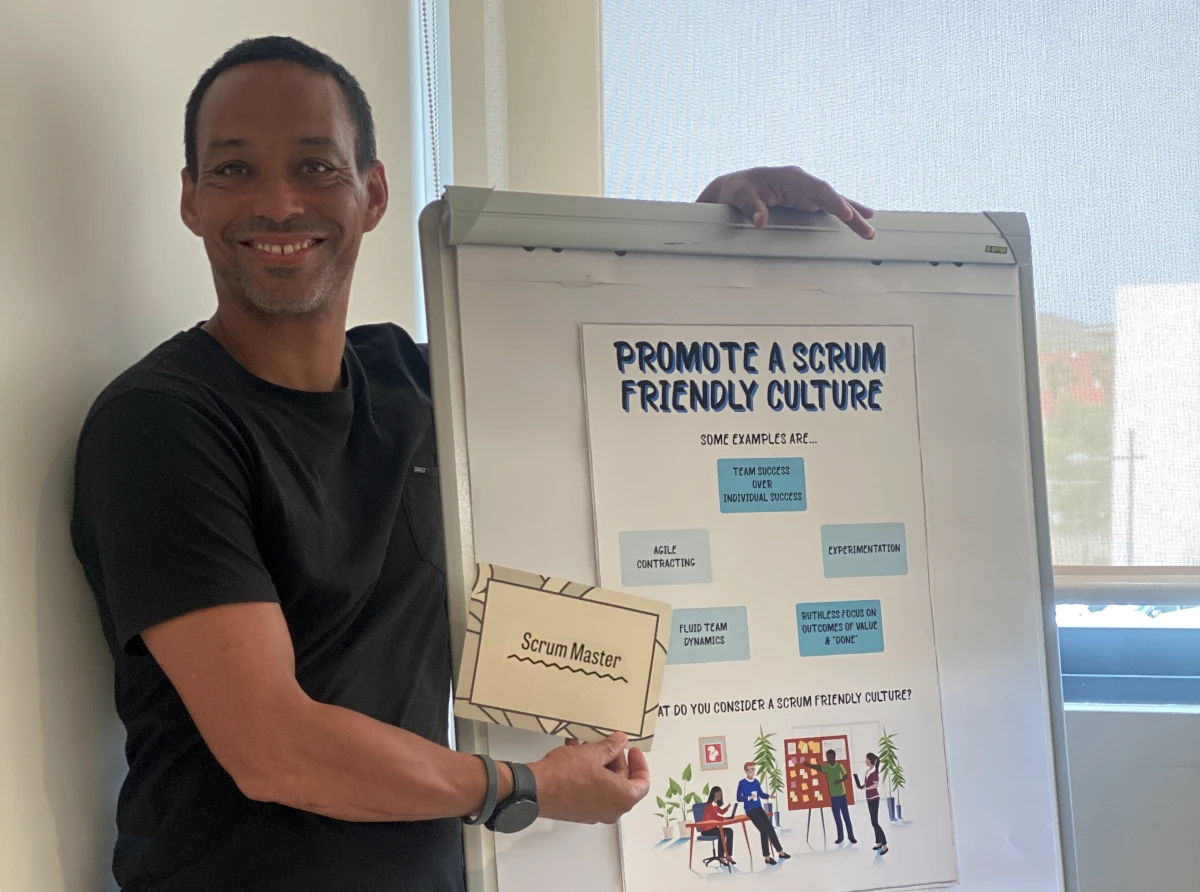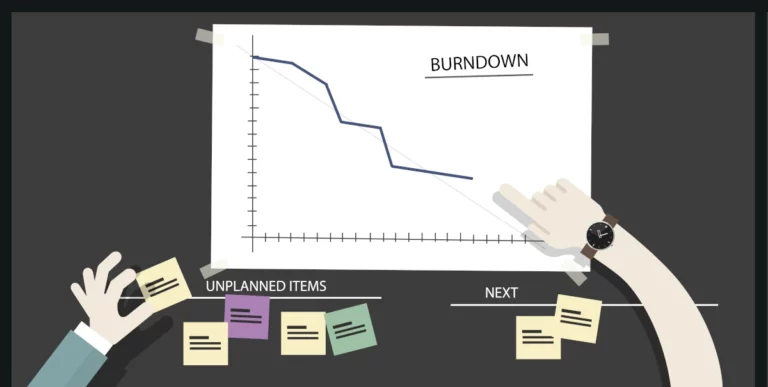The Role Of A Scrum Master
The role of a Scrum Master is often misunderstood due to misconceptions about agile methodologies and the specific functions within the Scrum framework. Many organisations and individuals perceive the Scrum Master as a project manager, team leader, an administrative assistant or scribe, “responsible for taking notes, the production and presentation of Burnup/ Burndown/ Velocity charts and graphs”.
The Scrum Master has nothing to do with the aforementioned. Let alone “present” it.
This misunderstanding can lead to inappropriate role expectations, hindering the effectiveness of the Scrum framework and the overall success of agile projects.
What a Scrum Master Should Be Doing
In her excellent book The Professional ScrumMaster’s Handbook, Stacia Viscardi describes the Scrum Master role this way:
“Think of the ScrumMaster as the Switzerland of the Scrum process—remaining neutral, helping both business stakeholders and development, interacting at the right times to create the most important and most valuable features first.”Stacia Viscardi – “The Professional ScrumMaster’s Handbook”

Facilitating Scrum Events
A Scrum Master is responsible for ensuring that the Scrum events (sprint planning, daily Scrums, sprint reviews, and retrospectives) occur and are productive. This involves facilitating discussions, helping the team stay focused on the agenda, and ensuring that each event’s objectives are met.
There are multiple ways of making the Scrum Events more engaging, but I found the more mature the Scrum Team is, the less engagement is needed. I would even argue, that things like “Planning Poker”, or popular Retrospective activities like “AHA!” or “I like, I wish” are wasteful in their own rights but if it benefits the Teams it should be encouraged and supported.
Coaching the Team in Self-Management and Cross-Functionality
The Scrum Master should coach the team to be self-organising and to take collective ownership of their work. This involves fostering a culture where team members feel safe, take initiative, collaborate effectively, and continuously improve their processes and skills. It also involves being able to resolve conflicts without any help.
In fact, the real long term goal of any good Scrum Master should be to become redundant, meaning that the team has become self-organising and self-managing to such a degree, that the Scrum Master is no longer needed and the organisation as a whole has completed the “Agile transformation”.
This is exactly the situation I have with my current team at BASTION. As I have mentioned elsewhere, on a team level, we went from “Waterfall” to “Mechanical Scrum” to “Professional Scrum” to “ScrumBan”. For me a clear sign of team maturity. And the more mature the team grew, the less I was involved on a team level and could put more effort into organisational changes and web development work. I honestly can not remember the last time I looked at a burn-up/ burn-down chart. While I could work with BASTION what feels like forever, I do feel becoming more and more redundant and I’m actively seeking a new challenge.
Removing Impediments
One of the primary responsibilities of a Scrum Master is to identify and remove impediments that are obstructing the team’s progress. These could be technical issues, organisational obstacles, or anything else that hinders value output. Most importantly maybe, the Scrum Master only removes impediments, that the team is unable to remove by itself.
Ensuring Scrum is Understood and Enacted
The Scrum Master educates and coaches the team and the organisation on the principles and practices of Scrum. This includes ensuring that everyone understands the roles, events, and artifacts of Scrum, and adheres to the agreed-upon processes.
Supporting the Product Owner
The Scrum Master assists the Product Owner in managing the product backlog, ensuring that the backlog is well-organised and that the team understands the priority and details of the backlog items. This support is critical in maintaining a clear and actionable roadmap for the team.
I earlier included a quote from Stacia Viscardi’s “The Professional ScrumMaster’s Handbook”. Here I want to quote her again, but in a negative way. I can’t imagine what she was thinking when she wrote the following:
“[… ] (The Scrum Master) helps the product owner get the product backlog in order if he or she does not understand how to do so.”
Stacia Viscardi – “The Professional ScrumMaster’s Handbook”
It’s a ridiculous statement. There are of course dozens of scenarios where the Scrum Master can and should support the Product Owner in managing the Product backlog. These scenarios have nothing to do with the Product Owner’s brain function capabilities.
Promoting Continuous Improvement
A Scrum Master fosters an environment of continuous improvement by encouraging the team to reflect on their processes and outcomes, learn from their experiences, and implement changes that enhance their efficiency and effectiveness.
Promoting Organisational Change
A Scrum Master promotes and pushes for Organisational change so that teams operate in a truly Agile Environment and not in a silo.
Examples of Misconceptions and Misguided Requests

Acting as a Project Manager
Misconception: Scrum Masters are often expected to function as project managers, controlling the team, assigning tasks, and directly managing the project’s scope, budget, and timelines.
Reality: Unlike project managers, Scrum Masters do not direct the team or make decisions about the project scope, deadlines or anything really. Their role is to facilitate the Scrum process, support the team, and help remove obstacles, rather than manage the project in a traditional sense.
Administrative Assistant Duties
Misconception: Some organisations view Scrum Masters as administrative assistants, responsible for mundane tasks like scheduling meetings, taking notes, handling paperwork, updating Jira or the Scrumboard.
Reality: While Scrum Masters do facilitate Scrum events, their role is strategic rather than clerical. They work to ensure that Scrum practices are effectively implemented and that the team is functioning optimally. Reducing them to an administrative role undermines their capacity to drive continuous improvement, observe and act on team chemistry and foster a self-managing team.
Technical Leadership
Misconception: There is a belief that Scrum Masters should also provide technical direction and solutions, effectively acting as the team’s technical lead or architect.
Reality: Scrum Masters do not need to be technical experts, or be technical at all, albeit it can help in certain situations. However, their primary role is to facilitate and support the team, not to provide technical solutions or lead the development work.
Scrum Masters with a technical background can often fall into the trap of suggesting solutions FOR the team, rather than letting the team find the best solution themselves. In this case the Scrum Master himself becomes an impediment by preventing the team to become self-managing.
The team collectively should take responsibility for technical decisions.

Micromanaging the Team
Misconception: Some believe that Scrum Masters should closely monitor every team member’s work, ensuring they adhere strictly to “the plan”. Whatever “the plan” is.
Reality: Scrum Masters promote self-organisation and trust within the team. They provide guidance and support but avoid micromanagement or any team-management at all. The goal is to empower the team to take ownership of their work. The default stance of a Scrum Master should be Switzerland.
Overlapping with the Product Owner
Misconception: Scrum Masters are sometimes expected to make decisions about product priorities and backlog items, roles typically reserved for the Product Owner.
Reality: The Scrum Master supports the Product Owner by facilitating communication and ensuring the backlog is well-maintained but does not make decisions about what should be built or the order of priorities. This is the Product Owner’s responsibility. The Product Owner can, and often should delegate PB efforts, but remains accountable.
Why These Misunderstandings Can Occur
Lack of Agile Knowledge
Many organisations adopt Scrum without fully understanding its principles. This lack of knowledge can lead to misinterpretation of the Scrum Master’s role and inappropriate role assignments. It is the Scrum Master’s responsibility to guide the organisation here.
Traditional Management Mindset
Organisations transitioning from traditional project management methodologies may struggle to let go of hierarchical structures and control-based management practices. This mindset can lead to treating Scrum Masters as traditional project managers.
Ambiguity in Role Definitions
The role of the Scrum Master is relatively new compared to traditional roles, leading to ambiguity and varied interpretations of what the role entails. This ambiguity can result in organisations defining the role in ways that align more with their existing practices rather than Scrum guidelines.
Resistance to Change
Implementing Scrum often requires significant changes in organisational culture, mindset and processes. Resistance to these changes can manifest in attempts to force Scrum roles into familiar, traditional frameworks, thus misrepresenting the Scrum Master’s role.
Depending on the organisation and how the role of Scrum Master is viewed, changing misconceptions of the role might require a huge amount of effort to correct for any Scrum Master. Effort that is so much better spent elsewhere. Fortunately, job descriptions can serve as a first (warning) sign of what the organisation thinks the role entails and sometimes it might just be best to stay away.
Your team needs a Scrum Master?
Send me an email: achility(at)protonmail.com







